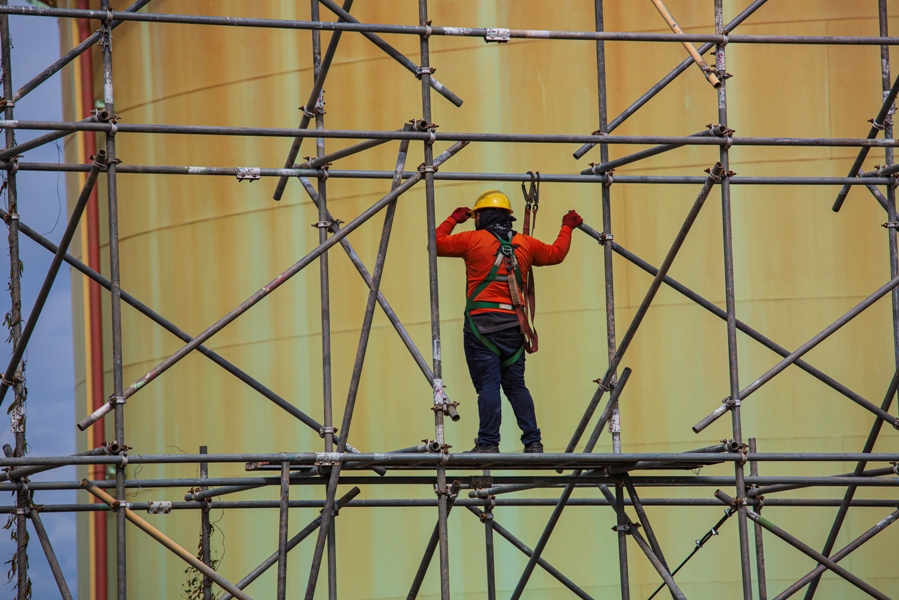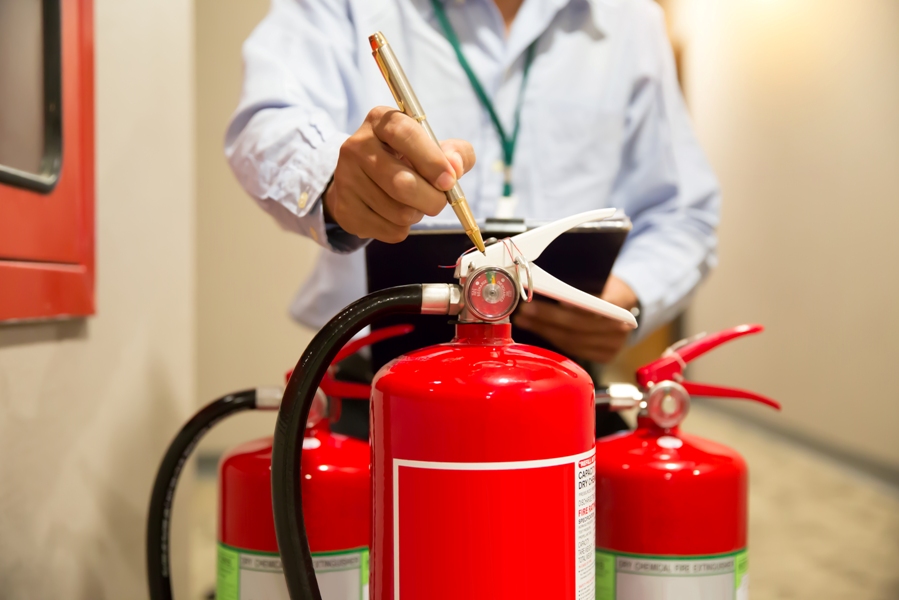Impact Safety Offers EM 385 24-Hour Competent Person Fall Protection Training Course
December 13, 2023
Tips for Organizing a Fire Extinguisher Training Session at Work
January 5, 20245 Challenges of Confined Space Rescues

When it comes to high-risk rescue operations, confined space rescues stand out because they can be particularly challenging. These types of rescues, often necessary in industrial and construction settings, require a specific and unique set of skills, knowledge, and experience. For professionals in this field, understanding the complexities and dangers of confined space rescue training can be the difference between life and disaster. We will explore the five main challenges of confined space rescues and offer insights into how these risks can be mitigated through effective confined space rescue training and OSHA certification courses.
Introduction
Confined spaces are not designed for continuous occupancy and often have limited access points. These types of spaces can include tanks, silos, pipelines, and underground vaults. Rescuing individuals from such environments requires specialized knowledge and equipment. The inherent dangers of these spaces make rescues difficult, demanding a high level of preparation and expertise.
Challenge 1: Limited Access and Egress
One of the primary challenges in confined space rescues is limited access and exit points. These spaces are often narrow, restricting the movement of both rescuers and their equipment. Maneuvering through tight spaces not only requires physical dexterity it also requires specialized training. Rescuers must be able to navigate these confines safely and efficiently to reach the victim and execute a successful rescue.
Challenge 2: Poor Ventilation and Hazardous Atmospheres
Confined spaces frequently have poor ventilation, leading to hazardous atmospheres, including toxic gasses, flammable or explosive environments, and oxygen-deficient environments. Rescuers must be equipped with the right protective gear and respiratory equipment. Understanding the nature of these hazards and how to monitor and mitigate them is a crucial part of confined space rescue training.
Challenge 3: Communication Difficulties
Effective communication is vital in any rescue operation. In confined spaces, it becomes even more challenging. The physical barriers of the space can impede verbal communication and radio signals. Rescuers must rely on alternative methods, such as hand signals or specialized communication equipment, to coordinate their efforts effectively. This highlights the need for comprehensive training in communication strategies specific to confined spaces.
Challenge 4: Psychological and Physical Strain
Confined space rescues can be physically demanding and psychologically taxing. Rescuers often work in uncomfortable and stressful environments, which can take a toll on their mental and physical well-being. This challenge requires rescuers to have not only physical strength and stamina but also the mental resilience to perform under pressure. Regular training and preparedness are key to building these attributes.
Challenge 5: Rescue and Medical Care Complexity
The complexity of providing medical care in a confined space is another significant challenge. Victims may require immediate medical attention, but the confined environment can limit their ability to perform even basic medical procedures. Rescuers need to be trained in providing effective medical care in these restrictive conditions, which can be a focus of advanced OSHA certification courses.
Mitigating the Risks
Mitigating the risks associated with confined space rescues involves comprehensive training and preparation. Confined space rescue training programs and OSHA certification courses are designed to equip rescuers with the necessary skills and knowledge. These programs cover various aspects, including hazard recognition, the use of specialized equipment, emergency procedures, and medical care in confined spaces.
Regular drills and exercises are also crucial in preparing rescuers for the real-world challenges they might face. These drills should simulate the confined space environment as closely as possible, providing rescuers with hands-on experience.
Conclusion
Confined space rescues are among the most challenging rescue operations in the field of emergency response. The unique nature of these environments presents significant risks that require specialized training and equipment to mitigate. By understanding and preparing for these challenges, rescue teams can enhance their effectiveness and safety in confined space rescue operations. Through dedicated training and continuous skill development, rescuers can be ready to face these challenges head-on, ensuring that they can provide prompt and efficient aid in these high-risk situations.
Confined Space Rescue Training With Impact Safety
Impact Safety offers comprehensive support for Confined Space Entry projects, providing a standby rescue team that enhances safety during planned shutdowns or urgent repairs. This team, adept in mobilization and bringing real-world safety experience, helps companies meet OSHA requirements for permit-required confined space entries. OSHA’s stringent regulations, which have seen penalty increases in recent years, necessitate expert support in ensuring worker safety and cost management. Impact Safety’s services include confined space assessment, rescue teams, hole watch, air monitoring, and more, emphasizing hands-on field experience over mere theoretical training. Founded in 2001, Impact Safety has over 35 years of experience in creating safer workplace environments across various industries. We offer a range of services, from safety consultation to full-time specialists, aiming to enhance safety, compliance, and operational efficiency while reducing risks and costs for businesses. Contact us to learn more.



